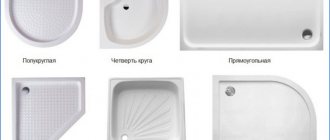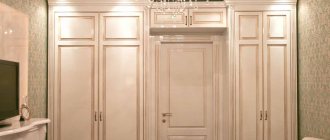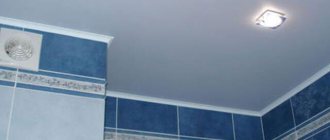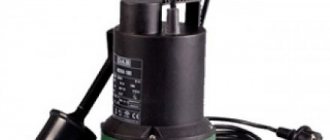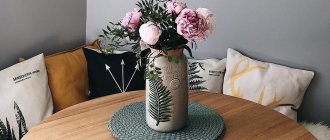The traditional method of decorating window openings in a room is curtains. They help to put the finishing touch on the interior of the apartment and create comfort in the house.
Before choosing a curtain, you need to decide on the style. It can be decorative. This type is used in various formal and assembly halls, often in large living rooms. It implies that the curtains will be decorated once: they represent an interior item. This type of curtain provides only aesthetic pleasure, but is not a functional item.
The next option for curtains are curtains in living rooms, which help hide residents from prying eyes, and during sleep they hold back excess light from the window. They are laconic and sewn from dense fabrics.
The most common type is mixed. Then the curtains have a practical benefit - they hide what is happening from prying eyes and at the same time look beautiful and expensive. This is a win-win for any living space.
Window decoration
The size of tulle and curtains directly depends on:
- curtain type (Roman or curtains);
- cornice lengths;
- parameters and features of the window opening;
- the general idea of the designer.
In order to avoid annoying mistakes when purchasing curtain fabric, you need to correctly calculate the size of the curtains.
If one of these factors is not taken into account, it will be difficult to correctly calculate the sides and area of the product. Accordingly, the aesthetic part of the enterprise is at risk.
If the tulle is too short, it will not be able to fulfill its direct function - to diffuse sunlight and complement the design of the room. This is especially true for the living room, because a flaw catches the eye and spoils the overall impression and mood.
The choice of cornice depends on the design of the room, the size of the surface to be decorated, the style of the curtains, the weight and texture of the fabric, and the method of its fastening, on the wall or ceiling.
If the curtains in the bedroom are not long enough, they will not be able to fully darken the space. And excessively large dimensions look untidy, and besides, it is unsafe. They are inconvenient to handle in everyday life, and they also get dirty quickly.
Manufacturers of home accessories have taken into account all the nuances; today you can buy products of standard sizes that are suitable for all typical rooms.
It’s the same story if the width for the curtains is chosen incorrectly: functionality is impaired, aesthetics are absent, and the overall impression is reduced. And curtains that are too wide usually just mean an untidy look.
When designing exclusive interiors, you can order a fastening system based on an individual project.
How to make perfect curtains?
To select the curtains of your dreams, you don’t always need to be an interior designer. It is enough to have taste and take into account some subtleties. Who else but the owner of the apartment knows what kind of curtains the home needs? First, you need to figure out what the composition consists of:
- Tulle is a light, translucent fabric. It gives the window a finished look without interfering with the light illuminating the room, and is rarely used separately from other components. Manufacturers offer hundreds of options to suit every taste and budget. The determining parameter is the fabric: voile, mesh, organza, cotton, silk;
- The curtain is the dark part of the curtains. Thanks to its heavy, massive structure, the fabric looks good draped and is a defining element in window decoration;
- The cornice is the element on which the curtain is attached. He takes the entire load upon himself and transfers it to the wall. Despite the technical function, a beautiful design for hanging curtains is also a small accent when creating an interior.
And if the selection of the fabric part is a personal matter and preference, then when choosing a cornice, accurate calculations and knowledge are required.
How to choose a cornice according to window size
The width of the curtains and the width of the cornice are usually different numbers, because the exact dimensions of the fabric are selected for roller blinds, while the rest require an increase for drapery. But before deciding on curtains, you need to know how to calculate the length of the cornice.
If the standard size of the cornice does not match your length measurement of the opening, then you can always saw it down.
Select them for curtains as follows.
- To the horizontal value of the window opening you need to add 15 cm on each side. This means that in total you will need to add 30-40 centimeters.
- But there are exceptions that must be taken into account: the ability of the material to drape, and how harmoniously the size of the window fits into the decor. It is necessary to increase to 50-60 cm if it is too small and it is important to visually enlarge it. And if the curtains are not prone to folds, or are heavy, then you need to think about making them convenient to move to the side, allowing light to better penetrate the room.
- If you have a large window, you can choose a shorter extension length than usual, but it is recommended not to make it shorter than ten cm at each end.
Wall cornices 3 m long must have at least 3 support points: 2 on the sides, one in the middle.
The misconception of beginners is to select the length of the cornice close to the window opening, in which case there will be a gap. And then the curtains do not fulfill their intended purpose: limiting the amount of sunlight inside the room and interior design. After all, it will not have any visual appeal, and there will also be gaps, which they usually try to get rid of.
Standard parameters were derived from the ergonomics of typical rooms, in which windows and walls are almost the same size.
Which cornice to choose for different rooms
When purchasing an element, take into account the installation location:
- For bedroom, office. The device is suitable for pastel shades. You can choose a design in the same tone with furniture, wallpaper or curtains. The design depends on the interior. Tubular chrome crossbars and string cornices are suitable for high-tech style. Any element covered with a wide baguette with patterns is combined with the classic style.
- For kitchen. Plastic devices are used for short curtains. For Roman, Austrian, and roller blinds, profile designs are used. Rotating cornices look good in this room. Wood elements are not suitable due to high humidity.
- For the living room. Select the device for the interior. Tubular structures in 2 or 3 rows are installed in the hall. You can use hidden guides. They will not distract attention from the curtains. For a living room in Art Nouveau style, forged metal or wooden carved models are suitable.
- For children's. Use bright cornices for curtains and wallpaper. The parameter for choosing an element for the kids’ room is material. The main requirement for it is environmental friendliness. It should not emit harmful compounds that can harm the child's health.
When purchasing a cornice, the type, size, material, and color are taken into account. Installation will require a device that is strong enough to support the weight of the curtains. Compliance with these rules is a guarantee that the model will last for a long time and will not collapse after installation.
Choosing the length of the curtain rod for roller blinds
The type of roller or Roman blinds usually involves hanging the fabric directly next to the glass. It should close completely without gaps, but also remain functional. That is, how to choose the right curtain rod and calculate its length.
Calculating the dimensions of the cornice for a roller blind is simple; just measure the width of the window.
- The size of the cornice is designed so that the curtain can completely cover the window.
- But at the same time, be sure to take into account that when opening it does not interfere, and the slopes are not damaged.
- Typically, the ideal dimensions correspond to the formula length plus 10-15 cm.
Holders for roller blinds can be purchased ready-made or ordered from a workshop.
Please note: if Roman blinds are attached to a window opening, then this is done according to the rules of curtain curtains.
Selection rules
In some ways they are right. This is not a difficult, but very painstaking task. After all, an incorrectly decorated window can reduce the effect of the repair. The buyer must ask two questions:
- how to choose curtains;
- what cornice to buy.
It’s easy to choose, you just need to pay attention to some factors:
- the material from which it is made;
- quality of cornice, fastenings;
- length and other parameters.
Size is not of small, and maybe even central, importance when choosing. The fact is that if the length is incorrectly chosen, no matter how high-quality the fabric of the curtains is, they can look like a cheap option. The location of the opening and the number in the room are of considerable importance.
In addition, the length, and therefore the location of the curtains, adjusts the size of the windows. From all of the above we can conclude that the dimensions are affected by:
- material for curtains;
- desired window size;
- location of the opening;
- number of windows.
How to calculate the width of a curtain according to the cornice
How to choose the size of curtains for a window is a question that arises after choosing the curtain rod itself. The basic values of canvas centimeters are the minimum width and length without additional nuances. Based on these numbers, each housewife calculates whether it is necessary to add auxiliary segments and in what quantities.
A correctly installed cornice should extend from each side of the window opening by 20-25 centimeters.
Often, the length of the curtain rod is a relative value, because much depends on the design, which does not always include the full use of the mounting pipe in the standard position. In the bedroom, the fastening for curtains is often done from wall to wall; in other rooms the additional distance is less. Therefore, the best option is to focus on the curtain model, the number of layers, and the type of fastening.
This installation allows you to freely move the curtains apart in order to sufficiently illuminate the room.
What's the best way to take basic measurements?
- The height is measured using a centimeter or tape measure from the hanging point to the lowest point (usually 3 cm from the floor).
- The width is measured with the same devices, only the reference points are the first and last fasteners (they are often hooked on the very corners of the product).
A window that is too narrow can be visually expanded if desired.
How to choose the right cornice?
It is necessary to decide on their types. Depending on the materials they are:
- Metal;
- Wooden;
- Plastic.
Thus, metal cornices are distinguished by their sophistication and durability, while wooden ones will add naturalness and freshness to the image. Plastic products are used in modern or complex interiors. This is because this material can take any form.
Refining the width parameters to perfection
The width of the curtain is not only the distance from the first to the last hook, but also takes into account the drapery that the owner wants to make. The splendor and volume of the folds also depends on the area and decor of the room. If the window is located in a spacious room, there is no furniture close to it, then a large amount of drape will look impressive.
Less noticeable folds fit better into modest sizes.
The most accurate measurements are obtained by using a metal tape measure rather than the usual measuring tape.
This means that the following must be taken into account.
- A large bedroom or living room often has small windows, so a lot of drapery is inappropriate there. The same goes for the doorway.
- If the window design is characterized by two layers, then the top panel should be 15 cm longer to achieve a more impressive result.
- If the room is not spacious, but not too modest, then you can use standards based on the length of the cornice. Its duration (if there are two or three leaves) is usually multiplied by a factor of one and a half. And long fastenings for curtains from two to four meters are multiplied with values of two and three, respectively.
- If the sizes of the window and the room are not proportional and not standardized, then you can start from the type of material. The values of curtain sections are usually multiplied by one point and seven tenths, and the veil, organza with print - by two. If the last fabric is without a pattern, then you can safely multiply it by three.
The use of ceiling cornices allows you to beautifully decorate windows, as well as separate part of the room with a curtain.
Important: the lambrequin is not counted in the same way as the curtains; their duration is equal to the length of the fastening pipe.
Types of curtain rods by appearance
The aesthetic appeal of curtain slats is not the last parameter of choice. However, it is important that the fastenings are not only beautiful, but also comfortable. We offer seven varieties of curtain rods that meet these requirements.
Round
Round or tubular cornice is the most popular variety from the range. The design is a solid, sliding or composite rod with tips.
You can choose standard single-row models and double-row designs for attaching double curtains. The second element of the cornices is designed to fix light fabrics, therefore it has a smaller diameter.
Round curtain rod with shaped tip
Baguettes
Baguette cornices consist of a fastening profile and a decorative strip that hides pipes and strings. The result is an impressive design for curtains and drapes.
Ceiling cornice with baguette
Strings
Cornices consist of two brackets and a thick string between them. If you plan to hang multi-layer curtains, give preference to products with several slats.
Brackets and strings are most often made of stainless steel. The second option is products made from polymers. However, such cornices have much less strength.
Advice! Place curtains made of light fabrics on string cornices. The structure may break under the weight of the curtains.
Metal string curtain rod
Tire
Busbar or profile cornices are plastic panels with several rows for hooks. These mounts are suitable for ceiling and wall mounting. In the second case, brackets will be required for fixation.
Curtain rods can have one, two or three rows. Some models are equipped with an electric drive for remote control using a remote control.
Tire multi-row curtain rod
Telescopic
Such cornices are also called stained glass. The structures consist of two elements of different diameters and tips. If necessary, you can easily increase the length of the rod by spreading the tubes.
Telescopic structures can be mounted on walls or directly on the window frame. For the second method, curtain rods that are equipped with brackets with a sticky base are suitable.
Telescopic vintage curtain rod
Cornices-cafe
Lightweight designs with thin rods and shaped tips. They are designed to be mounted directly to the frame. Most often they are mounted at the level of the middle of the window to hang spectacular decorative curtains.
Cafe curtain rod for curtains
Spacers
Spacer cornices are a rod with a spring inside. Such structures do not need to be mounted on brackets - they are held perfectly in the openings due to plastic or rubber tips.
Metal spacer cornice
An example of curtain calculation if the length of the curtain rod is 3 or 4 meters
When the curtains are 4 meters wide or even more, then the designer bears a considerable responsibility. After all, large windows become the central part of the interior; it is important to design them correctly, taking into account the rules and wishes of the owner. Therefore, for such cases, the path of self-tailoring is usually chosen.
How long a wall or ceiling holder for curtains should be is up to everyone to choose for themselves.
To do this, you must first measure a 3 or 4 meter curtain mount to understand what the exact base figure will be, which you will then need to multiply with the drapery coefficient (DR).
Correctly selected curtain rod sizes will not only create a cozy atmosphere, but will also facilitate various manipulations with curtains.
Instructions:
- We determine how many parts will need to be sewn.
- Then cut them out taking into account the pattern and seam allowances.
- In some cases, when the fabric has a large part of natural composition, it is necessary to give a centimeter or two for the fabric to shrink after washing and ironing.
By correctly choosing the size of the cornice and setting it to a certain height, you can visually expand or narrow the room, increase or decrease (again visually) the height of the ceiling.
Advice. Often, after sewing long original curtains (especially with a pattern that was selected), there are leftover fabrics. They are good for making garters or pillowcases for decorative pillows. This will add harmony to the interior and look stylish.
Types of eaves control
For ordinary curtains, a familiar mechanical curtain rod will do. You will have to control the position of the curtains manually, that is, you will have to move the curtains apart and move them yourself.
If you choose Austrian, Roman, French or Japanese curtains, you must purchase a motorized curtain rod. Possible options:
- Lifting devices. Systems for curtains that need to be lifted upward. Such models are ideal for Roman and Austrian curtains. Such cornices can be open or closed. The mechanisms are also distinguished by the control method and the maximum lifting height.
- Sliding devices. Such electric curtain rods are suitable for various roll sheets that will be moved apart horizontally. For example, Japanese curtains. The system consists of a sliding mechanism, an electric drive and a structure for manual control.
- Combined devices. Such cornices are suitable for curtain panels. This system combines the ability to manually control and move the blades using an electric drive.
You can control the curtain rods using levers or remote controls. Many manufacturers have already begun to equip devices with special sensors that respond to movements or lighting levels. These models are compatible with the smart home system.
Electric sliding curtain rod
Calculating the width of the curtain with a long cornice
Curtains with an aspect ratio of one to three or more are usually more suitable for heavy drapery. Therefore, it makes sense to use its coefficient - CD. For example, for this we take a curtain fabric, the cornice is three meters long, with CD = two and a half. This means we multiply these numbers and get a curtain width of seven and a half meters.
If you want the cornice to be invisible, choose an aluminum profile cornice or a plastic rail (cornice).
But the width of the piece of fabric will have to be made larger by at least two to three centimeters for processed seams and for shrinkage. And if the edges have bias tape or other decorative elements, then such additions are not necessary. The same goes for artificial materials that do not shrink.
Cornices are most often installed in one, two and three rows.
Types of curtain rods by mounting method
All fastenings are divided into two large groups - wall and ceiling. Let's figure out how to attach cornices, weigh the pros and cons for each option.
| View | What is this | Advantages | Flaws |
| Wall mounted | Designs for wall mounting. They consist of brackets and strips for hanging canvases. | 1. Models in any style. 2. Easy installation. 3. Options for light and heavy curtains. | 1. Large load for plasterboard walls. 2. Partial transmission of sunlight through the rods. |
| Ceiling | Structures that need to be fixed to the ceiling | 1. Visually raise the ceilings. 2. Help to disguise wide window sills. | 1. Difficulties when installing on a ready-made stretch ceiling. 2. Small variety of design options. |
Important! You should not use traditional cornices for a suspended ceiling. The canvas may not withstand the load.
Ceiling curtain rod for bay windows
Wall mounted metal curtain rod
Examples of correct calculation and design of windows
If the owner has a standard double-leaf window, usually it is one meter and forty centimeters wide, then the cornice is selected under it + 15 cm on each side. This means that the sum of the length of the window opening and the indentation will be equal to 1.70 m. If you consider that such windows are often found in the kitchen, the fabric will not be heavy, there is no point in draping it too much, so the coefficient may be two or slightly less.
By installing a cornice right under the ceiling, you can visually increase the height of the room.
As a result, we multiply the length of the cornice by a factor of two, we get 3.40 m of the curtain itself. And for cutting, you need to add centimeters for processing and shrinkage. It turns out that you need to cut three and a half meters wide on the curtain.
If the ceilings are high enough, the cornice can be installed just above the window.
Dependence of length on the number and location of windows
The first two points of influence are finished. Now we need to move on to the rest. The fact is that if the room is rectangular in shape, long and narrow, then it is better to choose a cornice that covers the entire wall. This will visually expand the space, giving it airiness and lightness.
In such rooms, the window is usually located on a small wall. Accordingly, even with a central location, the walls remain minimal. By making the cornice somewhat shorter, you can create a cluttered space. The rest of the space cannot be used in any way.
But this situation has its own nuances. When measuring the width of the wall, you should correctly calculate the length of the cornice. The kit includes an arc, brackets and tips. The tips also have parameters. In some cases they are quite large. In order for the cornice to fit exactly into the interior, the calculation should be carried out using the formula. Wall width – 2 cm on each side = arc + tips. If everything is calculated correctly, it will fit into the interior and will last for many years.
But in some houses there are not one, but two or more windows on the wall. In such a situation, you should use a single cornice for everyone. This is allowed only if the walls are less than one and a half meters. Otherwise it is not advisable. After all, wide spaces covered with textiles will look bulky. This will make the room visually less spacious.
The owner decided to frame each window separately. This will greatly lighten the space. It will become visually larger. After all, even a cornice with an indentation from the width of the opening will take no more than a meter from the walls on both sides. The remaining space can be decorated with a shelf or a clock. Leaving it blank is also acceptable. The main thing is that the interior should please the owners.
Conclusion
The width of the curtains and cornice is an important component when calculating the tailoring and installation of the product, because it should look presentable and allow the interior to look complete. If the window is large, it automatically becomes the center of attention, so it is important to make it flawless, which is why designers are often invited to carry out the project. They know how to take into account the nuances of the material, furnishings and dimensions of the room, as well as accurately calculate the drapery coefficients of the material.
If you need to visually increase the width of the entire room, use a wall-to-wall cornice.
Types of cornices of different shapes with photos and descriptions of mounting to the wall
We have already analyzed the types of cornices by design, installation method and materials. It's time to discuss the configuration of the structures. Here are six possible options.
Round
Many people confuse these curtain rods with regular round rods. However, there are non-standard designs designed for attaching partitions or textile decor.
Most designs from this category look like in the photo. The barbell in the form of a hoop is fixed to strips fixed to the ceiling.
Ceiling round cornice for decorative curtains
Semicircular
Semicircular or arc cornices are designed for decorating bay windows and placing decorative textile elements. The products are curved round rods made of metal or plastic. Most often they are fixed on figured brackets.
Ceiling semicircular curtain rod
Direct
Cornices for standard window openings. They can be either wall or ceiling. A distinctive feature is the absence of bends. A popular option from this category is shown in the photo.
Straight wall curtain rod
Corner
A corner cornice is an indispensable attribute for decorating windows located on adjacent surfaces. This is a convenient option if you don't want to mount two separate bars or bars.
The process of installing corner elements is simple - just fix the ends of the curved crossbar on two walls or ceiling. In the photo you will see how to do this.
Corner ceiling curtain rod
L-shaped
Such cornices are a type of corner cornices, so they need to be fixed according to a similar principle. The only difference between the L-shaped models is that one side of the bar is much shorter than the other.
Important! L-shaped crossbars are indispensable if you need to hang a mini-curtain or a fabric partition in a room for zoning.
L-shaped curtain rod
Rotary
Rotating cornices are curved rods with movable elements. If desired, you can easily change the bending radius and mount the mount on window openings of a non-standard configuration.
Swivel curtain rod for bay windows
Flexible
Such cornices are an aluminum or plastic strip with rows for fastenings. Flexible designs are suitable for window openings of non-standard shape.
Cornices can be used not only for placing curtains on windows, but also for installing screens, canopies, and curtains in doorways.
Flexible curtain rod for custom-shaped window openings
Advice! Flexible cornices are suitable for decorating windows in bay windows of various shapes.
How to attach curtains to a cornice: options with photos
If you have already chosen a curtain rod, it's time to think about how to hang curtains correctly. Let's look at different methods.
Kuliska
This fastening is the simplest option for curtains and light curtains. The first step is to make a drawstring. It is enough to fold the top edge of the fabric and carefully sew along the entire length of the fabric. You should get a fairly wide hole into which to insert the rod.
Drawstring fastening is suitable for wall round cornices. The first step is to hang the curtains, and then attach the bar over the opening.
Lightweight drawstring curtains
Loops
To secure the curtains, you need to sew fabric loops to the top of the curtains. If you want the curtains to hang in neat folds, place the fasteners at an equal distance from each other.
Advice! The design will look more aesthetically pleasing if the loops are made approximately 1.5 times wider than the rod.
Fixing curtains on hinges
Ties
The tie fastening is very similar to the loop method. You need to sew beautiful ribbons to the top of the fabric, then tie them one by one above the bar.
This option is not suitable for all interior styles. Bow ties on the curtains will fit well into such trends as retro Provence, country, eco, pop art.
Fixing curtains with ties
Rings
This method differs from the previous ones in that you must first string the clamps onto the rod and only then hang the curtains. Rings can be attached to fabric using special hooks or clips.
Feel free to use this method if you want to hang heavy curtains. The fasteners will not break under load - they are designed for quite a large weight of curtains.
Fixing curtains with rings
Advice! It is better to use rings that are sold with a cornice. If they are not included in the kit, you must choose fasteners made of a similar material.
Eyelets
Eyelets are neat, equally spaced holes in the upper part of the fabric. It is through them that the cornice rod will pass.
This method is suitable if you have chosen thin metal or wooden cornices. However, consider the type of curtain fabric. Eyelets do not always look appropriate on airy, lightweight fabrics.
Fixing curtains with grommets
Hooks
Fastening with hooks is suitable for closed cornices: rail, baguette. The fasteners do not have a decorative function, so they look unpretentious. Most often they are made of plastic and metal. The first option is preferable for light curtains, the second for heavy curtains.
Fixing curtains on hidden hooks
Clothespins
Clothes pins for curtains are otherwise called “crocodiles” or “crabs”. They are compatible with both closed track structures and round cornices. In the second case, the fastenings will be conspicuous, so the type of fabric must be taken into account. Ordinary metal “crabs” will effectively complement heavy curtains made of velvet, brocade, and jacquard. For light curtains, it is better to choose convenient magnetic clips. They hold the canvas tightly without damaging the fabric.
Fixing curtains with crocodile clips
With our tips, choosing a cornice will turn into an exciting experience. You will cope with the task perfectly!
